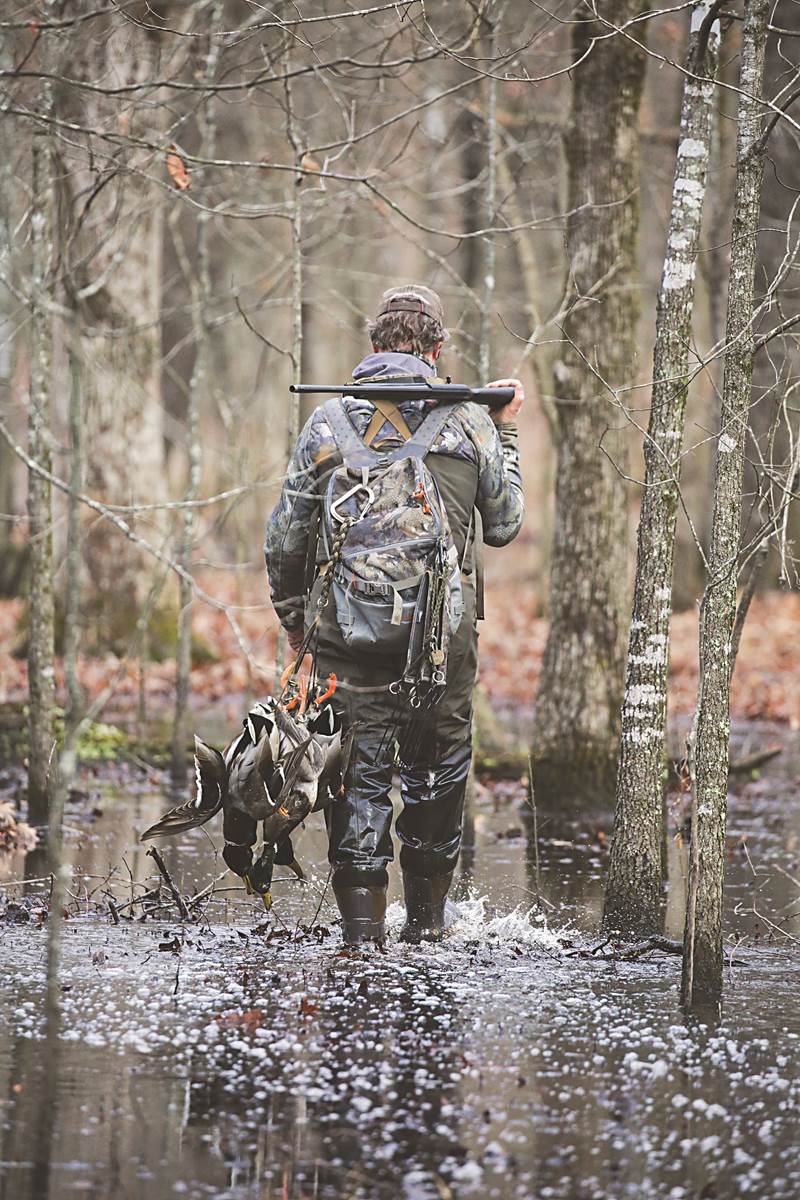Understanding Waterfowl: Hunters and Harvest Management
By participating in annual harvest surveys, you can help safeguard waterfowl populations and our hunting traditions
By participating in annual harvest surveys, you can help safeguard waterfowl populations and our hunting traditions
By Brad Bortner
.jpg)
When you buy a hunting license, do you ever wonder why you are asked how many birds you harvested last season? Or perhaps you have been asked to keep a diary of how many birds you bag or to send a wing from each bird you harvest to the US Fish and Wildlife Service (USFWS). If you have done any of those things, you have supplied vital information that is used to ensure healthy waterfowl populations and plentiful hunting opportunities.
Managers of waterfowl and other migratory birds rely on data collected from three sources: population surveys, banding programs, and harvest surveys. While agency personnel in the United States and Canada conduct waterfowl population surveys, hunters play a central role in the collection of the other two sources of data by reporting the harvest of banded birds and participating in harvest surveys.
There are three components of the annual harvest surveys that are cooperatively conducted by state fish and wildlife agencies and the USFWS. They include the Harvest Information Program (HIP), National Migratory Bird Harvest Survey (diary survey), and Parts Collection Survey (wing survey). Hunters participate in each of these surveys by submitting information about their hunting activity and the birds they harvest.
When they purchase a migratory bird license, hunters are asked whether they intend to hunt this year and how many birds they harvested the previous year. All migratory bird hunters are required to supply this information whether they hunt waterfowl, sandhill cranes, doves, woodcock, coots, snipe, rails, or moorhens. Although commonly known as HIP certification, some states refer to this process as a HIP registration, migratory bird hunting authorization, or something similar. Regardless of what this survey is called, hunters should answer all the questions completely and accurately.
It is important to note, however, that HIP certification is not an actual harvest survey. Instead, HIP data is used to improve the reliability of final harvest estimates by first sorting hunters into groups based on past harvest patterns. For reasons rooted in statistical theory, these groups are sampled at different rates in both the diary and wing surveys, which ultimately improves confidence in the final harvest estimates. Unfortunately, license-sales clerks sometimes skip the HIP questions or automatically enter responses to speed up the transaction and licensing process. To ensure the information that you provide is complete and accurate, notify the clerk at the beginning of the transaction that you would like to answer all the harvest questions. You can also complete your HIP certification online or through a mobile app.

Periodically throughout fall and winter, state agencies submit the contact information of HIP-certified hunters to the USFWS. As this information is collected, a sample of migratory bird hunters from each state is randomly selected to participate in the diary survey. Hunters who are selected receive letters asking them to record the date, location, and number of birds taken on each day they hunt throughout the season. Traditionally, the USFWS mailed a paper form or "diary" to each survey participant, but a web-based survey is now available in which hunters can record their harvest information online. At the season's end, hunters either return the completed paper survey or submit their electronic record to the USFWS. This data is then tabulated and used to generate official harvest estimates for each state, flyway, and, ultimately, the nation.
A smaller cohort of hunters is asked to participate in the wing survey. In this survey, hunters are supplied with postage-paid envelopes and asked to return a wing from each duck and the wing tips and tail feathers from each goose they bag, along with information about when and where the birds were harvested.
.jpg)
Hunters are asked to let the wings dry for a few days and then mail them in the double envelopes provided with the survey. Immediately upon their delivery to the USFWS, the submitted wings and tails are frozen and stored until the end of the hunting season. Typically, sometime in February, biologists from state fish and wildlife agencies and the USFWS gather at locations in each flyway to determine the species, sex, and age of all the bird parts submitted by hunters. These gatherings are commonly known as "wing bees," which are reminiscent of old-time quilting bees. Every year, biologists sample 25,000 to 30,000 duck and goose submissions in each flyway. Cooperative wing bees are also held for mourning doves and woodcock, which help estimate the harvest of those species.
Once the data from HIP, the diary survey, and the wing survey are collected, biologists and statisticians work together to generate scientifically rigorous estimates of the annual waterfowl harvest. While the total duck or goose harvest can be estimated from the diary survey alone, data from the wing survey are required to estimate the harvest of individual species nationally as well as in each state and flyway.

The wealth of data contributed by hunters via annual harvest surveys is crucial to the management of waterfowl and other migratory game bird populations. The timely information provided by hunters is used to estimate annual waterfowl harvests and to set hunting regulations for the seasons ahead. The continued participation of waterfowlers in these surveys is essential to safeguard populations of ducks and geese and to ensure abundant hunting opportunities now and in the future. For more information about US waterfowl harvests, visit fws.gov/harvestsurvey/harvest-vis.
Brad Bortner works for the Wildlife Management Institute. He retired from the US Fish and Wildlife Service after 33 years as a migratory bird biologist, including six years as chief of the Division of Migratory Bird Management at USFWS headquarters.
There are many misunderstandings, rumors, and even conspiracy theories associated with the Harvest Information Program (HIP) and migratory bird harvest surveys.
Here are the facts, along with a few tips:
Ducks Unlimited uses cookies to enhance your browsing experience, optimize site functionality, analyze traffic, and deliver personalized advertising through third parties. By continuing to use this site, you agree to our use of cookies. View Privacy Policy